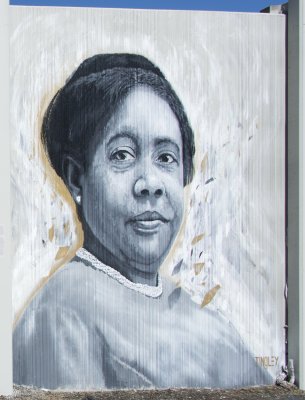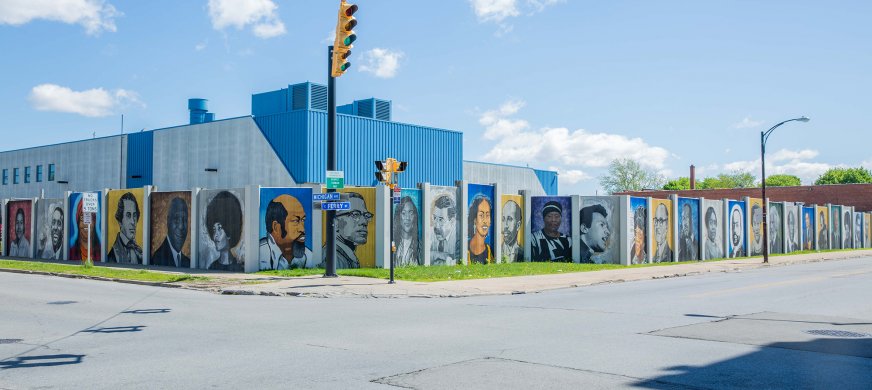Mary B. Talbert

Chuck Tingley’s portrait of Mary B. Talbert for The Freedom Wall, 2017. Photograph by Tom Loonan.
In both her Buffalo community and on the international stage, Mary B. Talbert was a pioneering civil rights activist who emphasized the potential power of women—especially African American women—to bring an end to injustice. Shortly after graduating from Oberlin College, she moved to Little Rock, Arkansas, to teach at Bethel University (now Shorter College) before becoming assistant principal of Union High School, the first African American woman to hold this title in what was still a segregated school district. In 1891, she married William H. Talbert, a successful businessman and city clerk, and moved to Buffalo.
Talbert quickly became involved in the local community, training Sunday school teachers at the Michigan Avenue Baptist Church and in 1899, cofounding the Phyllis Wheatley Club, which brought African American women together to organize food drives, place books by African American authors in school libraries, establish kindergartens for African American children, and otherwise support the community. Talbert led the Club’s rally against the all-white organizers of the Buffalo Pan-American Exposition and their decision not to include any representation of contemporary African American life. In 1905, Talbert hosted W. E. B. Du Bois and the other founders of what would be the Niagara Movement, which subsequently formed the nucleus of the NAACP. Talbert later served as a vice president and board member of the NAACP from 1918 until her death in 1923, leading the organization’s nationwide anti-lynching campaign. Talbert was also a long-serving leader in the National Association of Colored Women, spearheading the organization’s campaign to purchase and restore Frederick Douglass’s home as a national historic site and becoming the first African American delegate to the International Council of Women in 1920.
